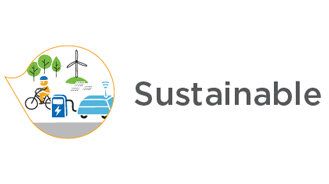Natural system context and human impacts
 Better Placed: Better Performance |  Future Transport: Sustainable |
The built environment sits within a wider environmental context that is affected by human impacts: if we care for Country, it will care for us.
Natural systems can complement both movement and place, such as trees reducing urban heat, offering shade, and providing visual interest. Projects need not only to preserve green infrastructure, but to repair green networks – e.g. focusing on new canopy cover in areas of urban heat, low vegetation cover, and high walking potential. Projects can respond to local climate conditions and use efficient, passive approaches and systems to provide shade, shelter, heating, and cooling, or capture on-site water for vegetation.
Key questions
- Does the project contribute to increased tree canopy cover, particularly for walking and cycling paths? Does the design provide the conditions for new trees to contribute to the street from the outset, and mature fully?
- Does air quality or noise affect users of the street or adjacent land uses?
- Has environmental performance been considered e.g. managing stormwater run-off and surface temperatures in extreme weather events? Has water-sensitive urban design been incorporated in the project?
- Is street space efficiently allocated? Is the space given to each mode proportionate to the number of people using the mode (rather than their passenger-car unit equivalents)?
- Have project outcomes been adapted to maximise both movement and place benefits?
- Have projects considered local native tree species and food trees appropriate for the local context?